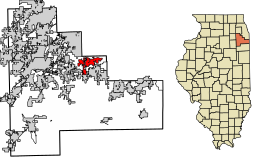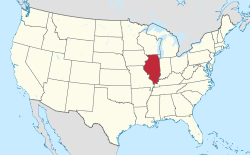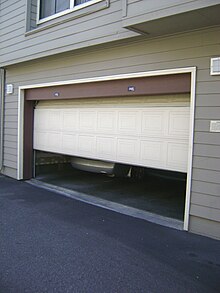What kind of garage door Opener and Door Do You Have? What should you do if your garage door suddenly stops working? .
If garage doors suddenly stop working, it's a stressful and uncomfortable experience.Whether you're hurrying for work or trying to drive your car in the garage during a rainstorm or storm, a door that isn't working is the last thing you need to face with.The first step in addressing this issue is to identify the kind of garage door and opener you are using, as this will greatly affect the way you approach diagnosing and fixing.
Garage doors typically fall into a few categories based on their style and operation.The most common varieties are roll-up, sectional and tilt-up doors.Sectional doors are made of panels that are joined by hinges, allowing the door to open and close by bending as it opens and closes on an upright track.Roll-up doors, which are typically found in commercial settings made from sections of wood that are rolled up into coils.
The tilt-up door, on contrary, is a solid, single piece that opens by tilting outward up.Equally important is identifying the type of garage door opener.The three most common types are belt-drive, chain-drive and screw-drive openers.Chain-drive openers, which rely on an iron chain to raise and lower the door, are long-lasting and affordable but they are noisy.Belt-drive openers function similarly, however they use a belt made of rubber that makes them more quiet and a good choice for attached garages.Screw-drive openers open and close the door with a threaded steel rod and offer a good balance of sound and cost.
After you have identified your garage door opener type the next step is performing a an initial check for typical issues.Ensure that the power source is connected to the opener by examining the outlet and breaker.Inspect the release cord for manual to be sure it hasn't been pulled, which will disconnect the door from the opener.Examine the tracks of the door and rollers to see if they have obstructions or damage, and then clear any debris.
Lubricate moving parts if necessary since a lack of lubrication can result in jamming, sticking or even squeezing.If the door is still unable to work, you should consider resetting the opener.This will often fix electronic glitches or faults.Consult the manual of your opener for specific reset instructions as this procedure may differ for different models.Many modern openers include reset buttons, however others require disconnecting the plug and plugging it back in.
In some instances, the issue might be more complex such as a broken spring or a worn-out motor that requires professional assistance.Springs are in a high tension and are dangerous to repair without the proper tools and skills.
When the garage door stops working or is not working, it's best to consult a professional.
Check for obstructions or debris
It can be a bit frustrating and even confusing when your garage door doesn't work abruptly, particularly if you are using it daily.
What do you do when your garage door suddenly stops working? - screw
- S&P Global Ratings
- screw
- pressure
Even a minor obstruction could hinder your garage door from functioning properly.
Begin by examining the tracks that run along both sides of the door.Look for obvious obstructions or the accumulation of debris.If you notice anything unusual like the twig or the stone stuck to the track, carefully remove it.
There are times when the problem might not be apparent immediately Therefore, it is recommended to run your hand through the track and feel for any unseen obstacles.Ensure that the tracks are aligned correctly and also, since any misalignment could cause the door to jam.Next, inspect the rollers and hinges.These components should move without resistance.If they're sticky or stuck, it might be a sign of the accumulation of dirt or rust.In these instances cleaning them and lubricating them can often resolve the issue.Use a soft brush or cloth to remove any debris, then apply a suitable oil to make sure that the parts move smoothly.
It's also crucial to examine the area surrounding the door itself.Sometimes items stored in garages can fall or shift, blocking the way of the door.Ensure that the area is clear and that there's nothing that is hindering the door's movements.
Verify the sensors if the door does not open after you have cleared any obstructions.
Modern garage doors come with safety sensors that prevent doors from closing when anything is detected in the path.Make sure the sensors are in good condition and aligned correctly, as dirt or misalignment can cause them to fail.By maintaining a clean path and avoiding obstructions, you can avoid calling a professional to fix a problem that is often easy to fix.
Check the Remote Control as well as the Wall Switch
If your garage door suddenly stops functioning this could result in an unexpected inconvenience that disrupts your regular routine.In such situations it's normal to feel that you must get the problem fixed quickly.One of the first and most efficient actions you could take is to look at the remote control and wall switch.
These components are often the culprits behind an unresponsive garage door, and making sure they are checked can save you time and possibly avoid costly expenses.First, consider the remote control.This handheld device is your primary tool for operating the garage door without direct physical interaction.Over time, remote controls can experience issues such as drained batteries, signal interference, or even internal damage.Start by replacing the batteries with new ones.It might seem simple, but dead batteries are a common reason for a garage door not responding.If the problem persists after replacing the batteries, try reprogramming the remote according to the manufacturer's instructions.Additionally, ensure that the remote is within the recommended range and that there are no obstructions blocking the signal.
The wall switch is also an important component of the garage door's installation.
If you are comfortable then open the switch panel to look for broken or missing wires.In some cases, both the the wall switch may be functioning properly but the door still remains unresponsive.This could indicate a problem with the garage door opener itself or other components such as sensors or door tracks.However, starting by utilizing the wall switch and remote control would be a sensible first step.
It helps you remove these common issues before moving on to more complicated troubleshooting strategies.This initial examination will help you save time and give you assurance that you've followed the correct steps to pinpoint the problem.
Manually test the Door Balance
It can be frustrating and a hassle when your garage door stops working. The garage door is an integral part of your home as it gives you security, protects against elements, as well as ease of access to your car as well as storage.
Testing the balance manually on the garage door can be crucial step to take in the event that your door is not functioning properly. This easy but efficient method will help you diagnose any issues that might be present and also prevent the possibility of further damage. Balance of the garage door is essential for its proper operation. An imbalanced door can cause more serious problems, including misalignment and broken springs.
What do you do when your garage door suddenly stops working? - pressure
- Abraham Lincoln
- floor
- curve
Begin by disconnecting the garage door opener.
Most garage doors come with a release system that can be found on the red cord or the handle. Once the door has been removed from the motor, lift it up to waist level and then let it go. A well-balanced door will remain in place and move slowly.If you find that the door isn't balanced it is vital to resolve the issue promptly.Door balance problems are typically related to tension in the springs. It is a risk to adjust yourself due to the pressure they're under.It is recommended that you get help from a professional to adjust spring tension and ensure that the door is well-balanced correctly.Doing this will not only solve the immediate issue, but also increases the longevity and durability of your garage door's mechanism.
Testing the balance manually on the garage door is an important first step to take when it suddenly ceases to function.
This method helps identify the cause of the issue. It can be traced to the door's balance, or in another place in the system.By knowing the importance of balancing your door and fixing any issues as quickly as possible it will prevent further damage and ensure your garage door runs without issue and in safety for years to in the future.Tracks and Rollers
When you're faced with a garage door that is suddenly refusing to function, your first instinct is to panic or think of the most complex technical issues.However most of the time, the solution is in a straightforward inspection of the tracks and rollers.This vital check could reduce time and costly repair costs and is the only priority in the event that your garage door ceases functioning.
The rollers and tracks of your garage's operation system are crucial. The tracks are metal rails that control the door as it opens, and the rollers travel along the tracks.
Over time, these parts may become dirty, misaligned or worn out, resulting into problems with operation.Start by inspecting the track for obstructions. Dust, grime or even small pieces of debris can get accumulated, causing the rollers to struggle to move on the track. Cleaning the tracks using a moist cloth could solve this problem.
The next step is to check the alignment of the tracks.Tracks should be straight and parallel to each other.If they appear bent or not in alignment, the door could jam.You can gently push the sections that are not aligned back into their proper position with a rubber mallet.However in the event that the damage is significant, it is advisable to call a professional to realign the tracks in a way that is safe and performance.
The wear and tear of rollers can occur with time. This is particularly true when they're made from plastic.
Metal rollers that have bearings last longer, and provide better performance.In addition, lubrication plays an essential role in maintaining the smooth operation of the tracks and rollers.Applying a silicone-based lubricant can lessen friction and help prevent wear.Make sure to lubricate the moving parts, such as the hinges and springs, to ensure that your garage door functions effectively.
In the end, looking at the tracks and rollers is a practical first step when your garage door suddenly stops working.It's a straightforward process that will often reveal and fix typical issues.By making sure that these parts are in good condition, aligned and properly lubricated, you will frequently repair your garage door to its original functionality without having to pay for costly repairs.
Regularly inspecting and maintaining these parts will also assist in preventing any future malfunctions. This can prolong the lifespan of the garage system.Check for visible damage or wear
It can be very frustrating and a hassle when a garage door stops operating abruptly, especially if you're on your way home or trying to secure the house to sleep.
Garage doors are complex systems comprising rollers, springs tracks, cables, and many other elements. In time, components of this system could wear out due to their constant use and exposure.
It is easy to spot obvious defects by conducting an examination visually.Begin by examining the springs. They are the ones responsible for raising and lowering the door. Check for signs of rust or wear. A worn out spring can make the door useless, so it's crucial to repair this problem immediately. Next, check the cables for signs of fraying and broken cables.
Another thing to look at is the door itself.Look for any visible bents, dents, or warping that might affect its balance or alignment.Pay particular attention to the weather stripping at the top of the door because a damaged strip may hinder the door from sealing properly.
Make sure that the sensors on the door are also well-maintained and aligned. Incorrect alignment or dirt could cause them to malfunction and stop working.While a thorough inspection of your property can offer valuable insight However, it's important to remember that some issues might not immediately apparent.If you are unable to find any obvious signs of damage or wear, it may be necessary to speak with a professional technician to pinpoint and address the problem.However through a preliminary inspection, you'll be able to identify and address minor issues before they become serious and costly repairs.
In conclusion, when you are confronted with a malfunctioning garage door, looking for obvious wear or damage is the initial step.This approach not only helps in identifying the problem quickly but also enables you to take the necessary action to bring the door back to its proper functioning.
You can prolong the life of your garage door simply by taking proactive steps.Review the Springs and Cables
If your garage door suddenly stops working and then it stops working, it can be difficult and inconvenient.One of the most essential things you should do in this instance is to assess the springs as well as cables.These elements are essential to the operation of your garage door and issues with them are usually the root cause behind broken door.
The springs play an important role in the operation and the smoothness of your garage, by supporting the weight. There are two major kinds of springs: extensions and torsion. Torsion springs are positioned above the garage, and they twist in order to conserve energy. Extension springs, on the other hand, are placed between the doors and extend to supply the required force.
As time passes they wear down, break, or loose tension, leading to problems with operation.Additionally, cables are important since they work with the springs to lift and lower the door.They are generally made of steel and are designed to withstand significant tension.However they may suffer due to wear and tear, fray, or snap due to the pressure they're under.A damaged cable could cause the door to become unbalanced or become completely inoperative.
If you're unsure if the cables or springs require to be adjusted, take a look and look them over. Examine for signs of wear or rust.
It is crucial to stress security when working with garage door components.
Cables and springs are under intense tension, and may cause serious injuries if mishandled.If you're unfamiliar with garage door repairs, it's wise to speak with an experienced technician.They are equipped with the right equipment and know-how to properly replace or repair these parts making sure your garage door is operating correctly and safe.In conclusion, when your garage door suddenly stops working, assessing the springs and cables is a key step in diagnosing the problem.Understanding their role and potential issues can help you determine whether a simple adjustment is needed or if professional intervention is required.Taking prompt action not only restores functionality but also ensures the safety and longevity of your garage door system.
You Should Call a Professional Technician
When your garage door suddenly stops working you may be unable to continue your day or even create danger to the security of your home.
It may be tempting to pick up an instrument box to attempt a fix by yourself but it's best to speak with a professional. This choice is not just about your safety, but also provide a lasting and more efficient solution.What do you do when your garage door suddenly stops working? - screw
- ZIP code
- soybean
- Republican Party
Garage doors are complex systems composed of various components such as springs, cables, tracks, and electronic parts.Each of these elements plays a crucial role in the door's operation, and a malfunction in any part can cause the entire system to fail.Without proper knowledge and experience, attempting to fix these issues can be dangerous.For instance, garage door springs are under high tension and can cause severe injury if handled improperly.Professional technicians are trained to deal with these risks safely, using the right tools and techniques to handle repairs.
Moreover, a professional technician provides expertise and experience an average person does not possess.
They can quickly diagnose the issue and identify whether it's a minor problem, like a misaligned track, or something more serious, like a broken spring.This expertise not only saves you time but also prevents the potential for further damage that can occur with incorrect handling.Professionals also have access to high-quality parts and can ensure that replacements match the specifications of your existing garage door system, leading to better functionality and longevity.A professional technician can also be more cost effective in the long run. While the DIY technique may seem cheaper at first but it could result in extensive and expensive repairs later.
Many technicians offer warranties on their services. This provides security in the event something goes wrong, your problem is guaranteed.Contacting a professional can reduce time and cost. Trying to understand the mechanism behind garage doors, acquire the right tools, and then perform a repair could take you hours or days. A technician will be able to fix the issue swiftly and let you return to normal.
The desire to repair the garage door yourself is powerful. However, contacting a professional is the best solution, most reliable and safest option. Their knowledge, their access to quality parts for replacement and their ability to complete quick and accurate repairs ensure that your garage will run efficiently and is protecting your home.


















